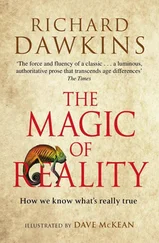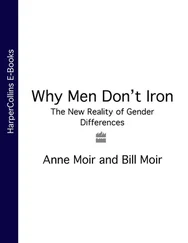David Deutch - The Fabric of Reality
Здесь есть возможность читать онлайн «David Deutch - The Fabric of Reality» весь текст электронной книги совершенно бесплатно (целиком полную версию без сокращений). В некоторых случаях можно слушать аудио, скачать через торрент в формате fb2 и присутствует краткое содержание. ISBN: , Жанр: Физика, Философия, на английском языке. Описание произведения, (предисловие) а так же отзывы посетителей доступны на портале библиотеки ЛибКат.
- Название:The Fabric of Reality
- Автор:
- Жанр:
- Год:неизвестен
- ISBN:0-7139-9061-9
- Рейтинг книги:4 / 5. Голосов: 2
-
Избранное:Добавить в избранное
- Отзывы:
-
Ваша оценка:
- 80
- 1
- 2
- 3
- 4
- 5
The Fabric of Reality: краткое содержание, описание и аннотация
Предлагаем к чтению аннотацию, описание, краткое содержание или предисловие (зависит от того, что написал сам автор книги «The Fabric of Reality»). Если вы не нашли необходимую информацию о книге — напишите в комментариях, мы постараемся отыскать её.
The Fabric of Reality — читать онлайн бесплатно полную книгу (весь текст) целиком
Ниже представлен текст книги, разбитый по страницам. Система сохранения места последней прочитанной страницы, позволяет с удобством читать онлайн бесплатно книгу «The Fabric of Reality», без необходимости каждый раз заново искать на чём Вы остановились. Поставьте закладку, и сможете в любой момент перейти на страницу, на которой закончили чтение.
Интервал:
Закладка:
A gene can function as a replicator only in certain environments. By analogy with an ecological ‘niche’ (the set of environments in which an organism can survive and reproduce), I shall also use the term niche for the set of all possible environments which a given replicator would cause to make copies of it. The niche of an insulin gene includes environments where the gene is located in the nucleus of a cell in the company of certain other genes, and the cell itself is appropriately located within a functioning organism, in a habitat suitable for sustaining the organism’s life and reproduction. But there are also other environments — such as biotechnology laboratories in which bacteria are genetically altered so as to incorporate the gene — which likewise copy the insulin gene. Those environments are also part of the gene’s niche, as are an infinity of other possible environments that are very different from those in which the gene evolved.
Not everything that can be copied is a replicator. A replicator causes its environment to copy it: that is, it contributes causally to its own copying. (My terminology differs slightly from that used by Dawkins. Anything that is copied, for whatever reason, he calls a replicator. What I call a replicator he would call an active replicator.) What it means in general to contribute causally to something is an issue to which I shall return, but what I mean here is that the presence and specific physical form of the replicator makes a difference to whether copying takes place or not. In other words, the replicator is copied if it is present, but if it were replaced by almost any other object, even a rather similar one, that object would not be copied. For example, the insulin gene causes only one small step in the enormously complicated process of its own replication (that process being the whole life cycle of the organism). But the overwhelming majority of variants of that gene would not instruct cells to manufacture a chemical that could do the job of insulin. If the insulin genes in an individual organism’s cells were replaced by slightly different molecules, that organism would die (unless it were kept alive by other means), and would therefore I ail to have offspring, and those molecules would not be copied. So whether copying takes place or not is exquisitely sensitive to the physical form of the insulin gene. The presence of the gene in us proper form and location makes a difference to whether copying takes place, which makes it a replicator, though there are countless other causes contributing to its replication as well.
Along with genes, random sequences of A, C, G and T, sometimes called junk DNA sequences, are present in the DNA of most organisms. They are also copied and passed on to the organisms’ offspring. However, if such a sequence is replaced by almost any other sequence of similar length, it is still copied. So we can infer that the copying of such sequences does not depend on their specific physical form. Unlike genes, junk DNA sequences are not programs. If they have a function (and it is not known whether they do), it cannot be to carry information of any kind. Although they are copied, they do not contribute causally to their own copying, and are therefore not replicators.
Actually, that is an exaggeration. Anything that is copied must have made at least some causal contribution to that copying. Junk DNA sequences, for instance, are made of DNA, which allows the cellular computer to copy them. It cannot copy molecules other than DNA. It is not usually illuminating to consider something as a replicator if its causal contribution to its own replication is small, though strictly speaking being a replicator is a matter of degree. I shall define the degree of adaptation of a replicator to a given environment as the degree to which the replicator contributes causally to its own replication in that environment. If a replicator is well adapted to most environments of a niche, we may call it well adapted to the niche. We have just seen that the insulin gene is highly adapted to its niche. Junk D N A sequences have a negligible degree of adaptation by comparison with the insulin gene, or any other bona fide gene, but they are far more adapted to that niche than most molecules are.
Notice that to quantify degrees of adaptation, we have to consider not only the replicator in question but also a range of variants of it. The more sensitive the copying in a given environment is to the replicator’s exact physical structure, the more adapted the replicator is to that environment. For highly adapted replicators (which are the only ones worth calling replicators) we need consider only fairly small variations, because under most large variations they would no longer be replicators. So we are contemplating replacing the replicator by broadly similar objects. To quantify the degree of adaptation to a niche, we have to consider the replicator’s degree of adaptation to each environment of the niche. We must therefore consider variants of the environment as well as of the replicator. If most variants of the replicator fail to cause most environments of its niche to copy them, then it would follow that our replicator’s form is a significant cause of its own copying in that niche, which is what we mean by saying that it is highly adapted to the niche. On the other hand, if most variants of the replicator would be copied in most of the environments of the niche, then the form of our replicator makes little difference, in that copying would occur anyway. In that case, our replicator makes little causal contribution to its copying, and it is not highly adapted to that niche.
So the degree of adaptation of a replicator depends not only on what that replicator does in its actual environment, but also on what a vast number of other objects, most of which do not exist, would do, in a vast number of environments other than the actual one. We have encountered this curious sort of property before. The accuracy of a virtual-reality rendering depends not only on the responses the machine actually makes to what the user actually does, but also on responses it does not, in the event, make to things the user does not in fact do. This similarity between living processes and virtual reality is no coincidence, as I shall shortly explain.
The most important factor determining a gene’s niche is usually that the gene’s replication depends on the presence of other genes. For example, the replication of a bear’s insulin gene depends not only on the presence, in the bear’s body, of all its other genes, but also on the presence, in the external environment, of genes from other organisms. Bears cannot survive without food, and the genes for manufacturing that food exist only in other organisms.
Different types of gene which need each other’s cooperation to replicate often live joined together in long DNA chains, the DNA of an organism. An organism is the sort of thing — such as an animal, plant or microbe — which in everyday terms we usually think of as being alive. But it follows from what I have said that ‘alive’ is at best a courtesy title when applied to the parts of an organism other than its DNA. An organism is not a replicator: it is part of the environment of replicators — usually the most important part after the other genes. The remainder of the environment in the type of habitat that can be occupied by the organism (such as mountain tops or ocean bottoms) and the particular life-style within that habitat (such as hunter or filter-feeder) which enables the organism to survive for long enough for its genes to be replicated.
In everyday parlance we speak of organisms ‘reproducing themselves’; indeed, this was one of the supposed ‘characteristics of living things’. In other words, we think of organisms as replicators. But this is inaccurate. Organisms are not copied during reproduction; far less do they cause their own copying. They are constructed afresh according to blueprints embodied in the parent organisms’ DNA. For example, if the shape of a bear’s nose is altered in an accident, it may change the life-style of that particular bear, and the bear’s chances of surviving to ‘reproduce itself’ may be affected for better or worse. But the bear with the new shape of nose has no chance of being copied. If it does have offspring, they will have noses of the original shape. But make a change in the corresponding gene (if you do it just after the bear is conceived, you need only change one molecule), and any offspring will not only have noses of the new shape, but copies of the new gene as well. This shows that the shape of each nose is caused by that gene, and not by the shape of any previous nose. So the shape of the bear’s nose makes no causal contribution to the shape of the offspring’s nose. But the shape of the bear’s genes contributes both to their own copying and to the shape of the bear’s nose and of its offspring’s nose.
Читать дальшеИнтервал:
Закладка:
Похожие книги на «The Fabric of Reality»
Представляем Вашему вниманию похожие книги на «The Fabric of Reality» списком для выбора. Мы отобрали схожую по названию и смыслу литературу в надежде предоставить читателям больше вариантов отыскать новые, интересные, ещё непрочитанные произведения.
Обсуждение, отзывы о книге «The Fabric of Reality» и просто собственные мнения читателей. Оставьте ваши комментарии, напишите, что Вы думаете о произведении, его смысле или главных героях. Укажите что конкретно понравилось, а что нет, и почему Вы так считаете.












